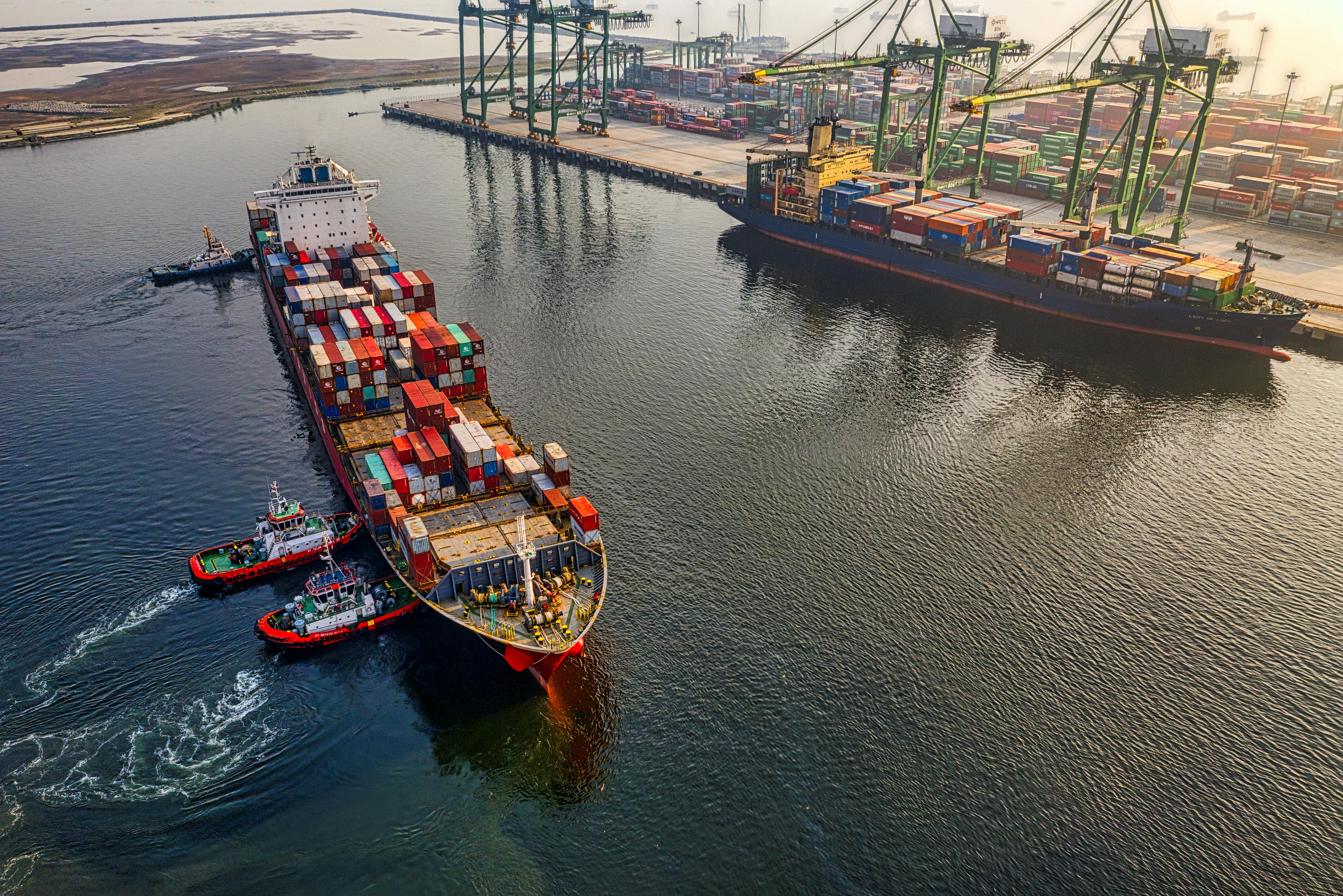Written by Chloe Carter — Senior Business & Technology Editor, FinanceBeyono.
E-commerce Growth in 2025: New Trends Shaping the Future of Online Shopping

The global e-commerce landscape in 2025 is not just evolving—it’s transforming at lightning speed. Fueled by artificial intelligence, immersive technologies, and post-pandemic consumer habits, online shopping has become more than convenience—it’s a digital experience that anticipates your needs before you even search. From predictive algorithms to sustainable logistics, 2025 marks the dawn of a new e-commerce economy defined by personalization, ethics, and data precision.
Part 1: The Global E-commerce Surge — A $7 Trillion Revolution
By mid-2025, global e-commerce revenue surpassed $7 trillion, according to UNCTAD and Statista reports. Asia remains the powerhouse, contributing nearly 60% of total transactions, while North America and Europe are focusing on sustainable, data-driven expansion.

What’s driving this massive growth? Three key factors stand out:
- AI-driven personalization: Platforms use deep learning to predict consumer behavior, adjusting pricing and product visibility in real time.
- Cross-border trade: International platforms like Alibaba, Temu, and Amazon Global Marketplace make global shopping seamless with currency and tax automation.
- Payment evolution: The rise of digital wallets (Apple Pay, PayPal, Alipay, STC Pay) and BNPL models continues to reshape buyer confidence.
According to McKinsey’s 2025 retail forecast, 76% of global consumers now expect AI-assisted product recommendations, and 65% are open to brands using their behavioral data—as long as transparency and control remain intact.
Part 2: AI and Predictive Commerce — Shopping Before You Know It
In 2025, e-commerce is no longer reactive. AI-driven “anticipatory logistics” now allow major retailers to ship products before customers click “Buy.” By analyzing browsing behavior, search intent, and purchase cycles, Amazon and Walmart+ are piloting predictive shipping algorithms to deliver goods within 24 hours of intent detection.

Machine learning also enables real-time inventory optimization. AI systems detect shifts in demand by tracking social trends, Google searches, and influencer-driven virality. For example, a trending TikTok fashion item can move from manufacturing to doorstep in just 72 hours through automated supply chain responses.
AI + Emotion Recognition
The newest layer of innovation in 2025 is emotion-based shopping. Using camera and voice AI, platforms analyze micro-expressions or tone to suggest mood-based purchases. This emotional mapping—used by retailers like Sephora and Nike—creates a personalized “digital empathy” model where technology feels human.
Part 3: Sustainable Commerce — The Green Revolution in Online Shopping
Sustainability has become the new currency of trust in 2025. Over 70% of online consumers say they would switch to a brand with a verified carbon-neutral supply chain. E-commerce giants like Amazon, Zalando, and Shopify have implemented AI-powered carbon trackers that display the environmental cost of each purchase.

From biodegradable packaging to electric delivery fleets, the green supply chain is evolving from a marketing tool into a measurable KPI. In Europe, e-commerce regulations now require major retailers to disclose sustainability scores—similar to food nutrition labels.
Eco-Delivery Models
Logistics firms are adopting drones and autonomous EV fleets to cut emissions. Companies like DHL and UPS report that drone-assisted rural deliveries reduce carbon output by 35%. Meanwhile, local “micro-warehouses” inside cities shorten delivery distances and optimize route efficiency.
In 2025, sustainable commerce is no longer optional — it’s a competitive edge. Brands that fail to align with environmental goals face higher churn and lower customer retention.
Part 4: Payment Evolution — From Crypto to Biometric Checkout
The payment revolution of 2025 has transformed the checkout process from a transaction into a seamless, invisible experience. As biometric technology and digital wallets expand, physical cards are rapidly disappearing.

- Biometric verification: Fingerprint and face-based payment authorization reduce fraud by 82% compared to 2020 levels.
- Crypto integration: Bitcoin, Ethereum, and CBDCs (Central Bank Digital Currencies) are accepted by more than 60% of online merchants in the U.S. and Europe.
- Buy Now, Pay Later (BNPL): Predictive AI now tailors credit approval to user risk, making BNPL safer and more inclusive.
Platforms like Stripe, Adyen, and Square dominate global payments by merging AI with risk analytics. Machine learning identifies fraud patterns instantly, creating a smoother customer experience while maintaining strict compliance.

AI-Backed Trust Systems
AI isn’t just powering payments—it’s protecting them. Real-time fraud detection has evolved into predictive identity management, where user intent, typing rhythm, and behavioral cues are analyzed to confirm authenticity. This means that even if a hacker steals credentials, they can’t mimic your digital fingerprint.
As finance and e-commerce converge, the next frontier is autonomous transactions — purchases executed automatically by AI agents within user-defined budgets. For example, your fridge could reorder milk using your crypto wallet when inventory drops below a threshold.
🔗 Explore More on FinanceBeyono:
AI-Driven Financial Compliance: How Automation Redefines Global Regulation
Blockchain Beyond Crypto 2025: Real-World Applications Transforming Industries
Part 5: AI Supply Chains — The Invisible Backbone of Global E-commerce
Behind every “Buy Now” button lies a massive AI-powered infrastructure managing manufacturing, logistics, and delivery with unprecedented precision. In 2025, autonomous supply chains are the new standard — predictive, adaptive, and nearly invisible to consumers.

Companies like Maersk, FedEx, and Alibaba Cloud use machine learning to forecast shipping disruptions, reroute cargo in real time, and balance warehouse capacity across continents. AI-driven demand forecasting allows brands to produce just-in-time inventory, minimizing waste and cost.
Smart Warehousing & Robotics
Robotics has become the pulse of 2025 logistics. Amazon’s “Kiva 2.0” robots manage up to 1,000 items per minute using vision-based object recognition and autonomous sorting. Warehouses now operate in full synchronization with AI-driven ERP systems, ensuring zero idle inventory.

The result? Shorter delivery times, lower carbon emissions, and a transparent global supply network where every item is traceable in real-time through blockchain-backed tracking. This transparency is redefining consumer trust and regulatory compliance alike.
Part 6: Immersive Shopping — From Clicks to Experiences
Forget flat screens — 2025’s shoppers step into their carts. Immersive commerce has merged augmented reality (AR), virtual reality (VR), and haptic feedback to create 3D shopping universes where users can see, feel, and interact with products virtually.

Retailers like IKEA, Nike, and Shopify Plus use AR integration so customers can visualize furniture in their homes or try sneakers virtually before checkout. According to Deloitte’s 2025 survey, 48% of Gen Z shoppers say AR experiences directly influence purchase decisions.
Voice & Emotion Commerce
Smart assistants like Alexa and Google AI have evolved into voice-driven shopping concierges. They analyze tone, hesitation, and phrasing to detect buyer confidence or uncertainty. This allows them to adjust product recommendations, offer discounts, or suggest alternatives instantly.

The emotional layer of e-commerce introduces a new era called Empathic Retail — where AI understands context, intent, and even stress levels. Retailers are learning that empathy sells as much as convenience.
🔗 Related Reads from FinanceBeyono:
The Future of Healthy Living: Top Wellness Trends for 2025
AI-Powered Risk Assessment: The Future of Personalized Insurance
Part 7: Social Commerce — Where Shopping Meets Community
In 2025, shopping is no longer an isolated act — it’s a social event. Platforms like TikTok Shop, Instagram Commerce, and YouTube Live have merged content and commerce into a single continuous stream of engagement. Product discovery happens through creators, and authenticity—not advertising—is now the strongest currency.

Consumers trust creators more than brands — 63% of Gen Z and millennials say they’ve purchased a product directly from a social recommendation. Live shopping events, integrated with AI analytics, allow instant engagement where algorithms highlight trending products dynamically during streams.
AI-Powered Influencers
The rise of virtual influencers — AI-generated personalities like Miquela or Imma — is changing brand partnerships. These synthetic figures promote products across multiple time zones, languages, and demographics simultaneously. They generate massive engagement without fatigue or controversy, redefining what “influence” means in the digital age.

The blending of human and artificial influence has birthed the AI Creator Economy, where brands use data-driven personalities to target ultra-specific audiences with unmatched precision.
Part 8: The Next Frontier — AI Marketplaces and Ethical Algorithms
By the end of 2025, the world’s largest e-commerce platforms are no longer human-curated. Algorithms manage listings, pricing, logistics, and even vendor selection autonomously. We are entering an era of AI Marketplaces — self-regulating ecosystems powered by predictive analytics and blockchain authentication.

However, with automation comes ethical complexity. Bias in recommendation algorithms can lead to unfair visibility for small sellers or geographic discrimination in pricing. To address this, regulators in the EU and U.S. have begun drafting Algorithmic Fairness Acts—laws requiring transparency in AI decision-making processes.
Decentralized Commerce
Decentralized marketplaces like OpenBazaar 2.0 and emerging Web3 commerce protocols are restoring power to small vendors. Through smart contracts and crypto payments, they eliminate intermediaries, allowing direct buyer-seller connections with full data ownership.

This balance between automation and autonomy will define e-commerce’s ethical landscape for the next decade. The winners will be brands that blend AI efficiency with human empathy.
Conclusion: The Future Is Predictive, Ethical, and Infinite
E-commerce in 2025 is not about selling — it’s about sensing. The convergence of AI, sustainability, and emotional design has reshaped digital trade into a living, learning organism. Tomorrow’s marketplace will anticipate, empathize, and evolve — much like the consumers it serves.
In essence, the future of online shopping lies in balance: Technology must serve humanity, not replace it. As AI gets smarter, brands that remain transparent, ethical, and emotionally intelligent will build loyalty that no algorithm can replicate.
✅ Related FinanceBeyono Reads:
Global Health Insurance 2025: How to Choose the Best Plans in the U.S. and Europe
Blockchain Beyond Crypto 2025: Real-World Applications Transforming Industries
The Future of Digital Lending 2026: AI Credit Models and Smart Finance Evolution
© 2025 FinanceBeyono | Written by Chloe Carter — Business & Tech Editorials Division.
